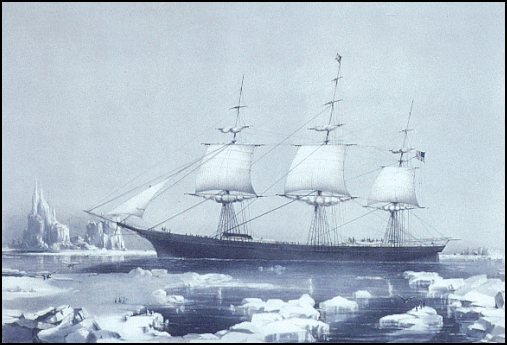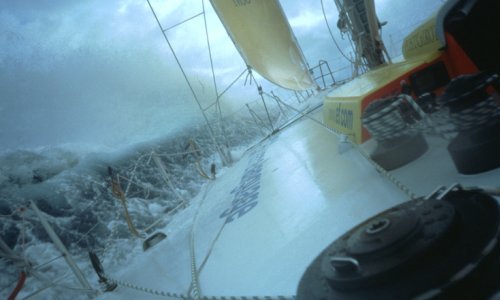2. The Roaring Forties and the Antarctic Circumpolar Current
Is there a 'right' way to sail around the world?
If you listen to sailors, there is certainly a wrong way: from east to west, against the wind and currents.

In the old days of wind power, before the Panama Canal, ships had to round Cape Horn on the southern tip of the American continent to move people from the Atlantic side of America to the Pacific west coast. Cape Horn was notorious for its hazards: strong winds, large waves, and icebergs drifting up from Antarctica. Whoever had rounded the Cape westward belonged to a superior class of men; they could carry an earring on their left ear, and urinate into the wind.
It's much the same today. Sailing around the world means braving the Southern Ocean, the cold, stormy, ice-berg ridden seas around Antarctica. Doing it the wrong way, westward against the wind, just adds to the challenge.
The Roaring Forties
Rounding Cape Horn westwards means sailing against the Roaring Forties - the prevailing westerly winds that circle the world between 40 and 60 degrees South. There is no land to break the wind, so the Roaring Forties are stronger and more persistent than the corresponding westerlies in the northern hemisphere. The average wind speed between 40°S and 60°S is 15-24 knots (8-12 m s-1), with strongest winds typically between 45°S and 55°S.
The Antarctic Circumpolar Current
The Roaring Forties drive the Antarctic Circumpolar Current (ACC). This is the greatest current in the world, with a flow equal to more than a hundred times that of all the world's rivers put together. Yet the current speed is rarely more than 20 cm s-1.
The reason for the huge flow of this current is not its speed, but its width and depth. Unlike other surface currents, which extend no deeper than 800-1000m, the ACC extends to depths of 2000-4000 m, and can be as wide as 2000 km.
More about wind, waves and currents in the Southern Ocean
Surface currents: summary
- The surface currents are driven by the prevailing winds and form giant gyres in all the main oceans.
- There are 5 subtropical gyres, driven by the easterly tradewinds in the subtropics, and the mid-latitude westerlies.
- In the southern hemisphere the westerly winds at 40-50°S also drive the Antarctic Circumpolar Current, which circles the continent of Antarctica.
- In the northern hemisphere the continents divert the currents, so they form sub-polar gyres in the Atlantic and Pacific, both driven by the mid-latitude westerlies.

